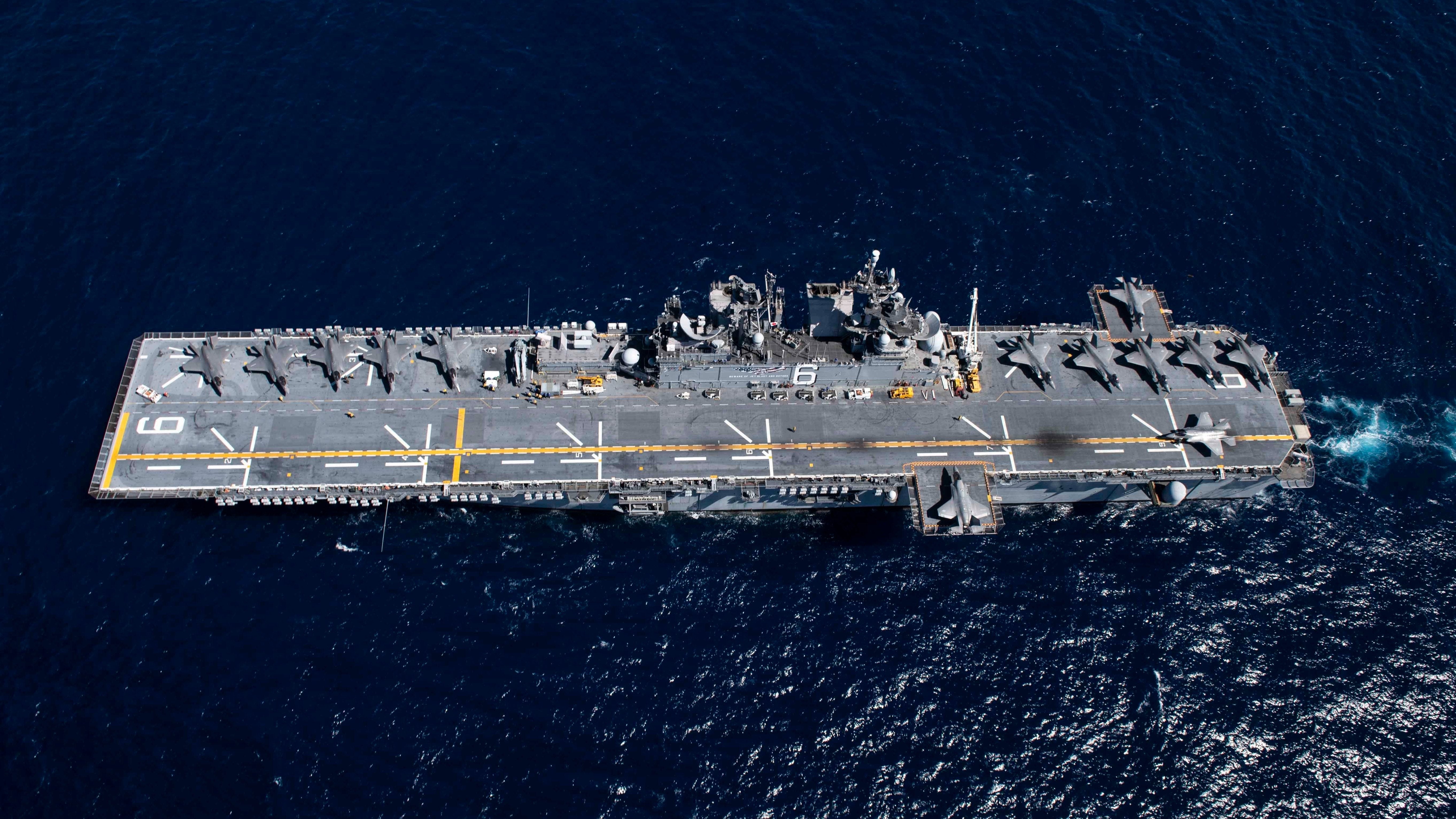The USS America (LHA-6) was photographed this week with 13 Marine F-35Bs embarked. This "Lightning Carrier" configuration eschews the traditionally more balanced force composition aboard amphibious carriers, trading out V-22 Ospreys and MH-60 Seahawks to open up space for more F-35s (though it can also be noted that the America was photographed earlier this month with 12 F-35Bs in addition to a couple of Ospreys).
There are several way to consider an experiment like this, many of which have already been explored:
- It could be a way for America to maximize her aviation facilities for offensive airpower, considering she lacks the well deck of other amphibious carriers.
- An amphibious carrier with 13 F-35Bs aboard -- that can reportedly carry up to 20 F-35Bs -- could potentially serve in some capacities that have traditionally required a US supercarrier.
- While the amphibious carriers and F-35Bs lack some capabilities of a supercarrier and its air wing, amphibious carriers are also much cheaper.
But it also says something about the future and culture of the Marine Corps. The Marines have spent much of the last 18 years as America's "second army," fighting inland in Iraq and Afghanistan. This has led to questions about the direction of the Marines, and whether the Corps can carry on without realigning its priorities. While there's precedent for the Marines to fight as the Army does, it had traditionally been done from coastal deployments.
The long-term planning for the Marine Corps appears to be trying to return to that idea. The Marines appear to have been developing an "island hopping" strategy recently that could be used in the Pacific. A "Lightning Carrier" would sacrifice ability to put Marines ashore, but the ability to deploy F-35Bs from an amphibious carrier or from a small airstrip could support that strategy.
The Marines' history and culture isn't just about fighting on land, but getting ashore and holding islands or coastal territory with combined arms. A "Lightning Carrier" could have a crucial role in that strategy, pending the results of these tests.

No comments:
Post a Comment